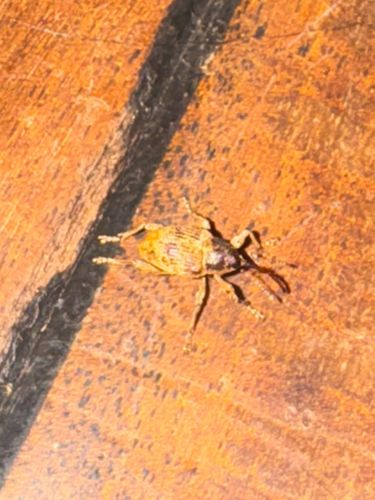Weevil (General)
Scientific Name: Varies widely by species within Curculionidae
Order & Family: Order: Coleoptera, Family: Curculionidae
Size: Typically 1 mm to 40 mm, but most common species are between 2 mm and 6 mm.

Natural Habitat
Highly varied, depending on the species. They can be found in agricultural fields, gardens, forests, grasslands, and even stored food products within homes. Their habitat is closely tied to their host plants.
Diet & Feeding
Mostly herbivorous, feeding on various plant parts including seeds, stems, roots, fruits, and leaves. Some are highly specialized to a single plant species, while others are generalists.
Behavior Patterns
Weevils are generally slow-moving insects. Females use their snout to chew a hole in plant tissue where they lay their eggs. Larvae develop inside the plant. Many species are nocturnal, feeding at night and hiding during the day. Some species feign death when disturbed.
Risks & Benefits
Potential Risks: Many weevil species are significant agricultural pests, causing damage to crops (e.g., cotton boll weevil, rice weevil, granary weevil). They can also infest stored grains and other food products. Potential Benefits: Some weevils are used in biological control to manage invasive plant species. They also play a role in decomposition and nutrient cycling in ecosystems.
Identified on: 8/27/2025